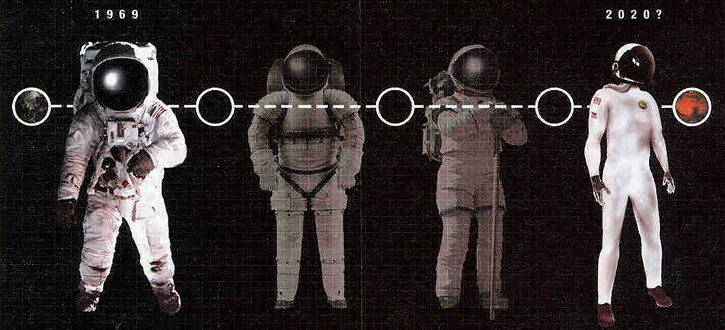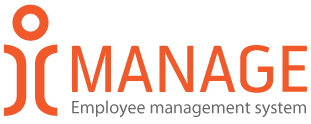iManage hub
Easy to understand articles about perfomance & employee management system
Reinventing Job Descriptions - Part I
Basic misunderstanding is the one of what purpose job descriptions serve and how they should look like. So, let's go through some of the typical assumption, and clear out important points, so you can use solutions and follow recommendations.

By Ivan Marković | Job Descriptions, HR, Organisational development, Benefits |
Our work often requires complex conversations with people who are not from HR departments, mostly CEOs and senior managers in the organizations we work with. To fully understand company and propose something that makes sense, we often need some job descriptions. "No problem, someone from the HR service will send them to you," is a typical answer. "And why don’t You show us descriptions right now? I mean, when we're, like, already there and talking about it at the very moment. To speed up the whole process for, like, two weeks.", is what I often think to myself. Of course I know the answer. In short, they do not even know where the job descriptions are. After all, why would they need to have a job descriptions of the employees they lead, when they know what they are doing, right?
And here lies a big problem of understanding the need for systemic organization of the company. Basic misunderstanding is the one of what purpose job descriptions serve and how they should look like.
So, let's go through some of the typical, but also false, assumptions, solutions and recommendations.
Let us start with a few common misconceptions about job descriptions:
- People know what their job is and we do not need it
This is one of the biggest misconceptions that managers have. Although employees know what they are doing during the day and how their position is called, a simple survey showed that less than 6 percent of the employees listed 5 of their primary goals from their job description. 6 percent! This is, like, one in 18 employees. And not to discuss about how they cannot order them by priority.
- Job descriptions are formalities
And they are, if they look at them like that. Job descriptions exist so that the employee would know what his job is and to present his duties clearly and unambiguously. Also, their purpose is to clearly define what responsibilities are and thus to prevent problems. But first of all, the purpose is to organize and manage the resources of a company in order to achieve its goals. Now, if that is the formality, then fine.
- Job descriptions are often quite different from what people really do
Well, but why is it like that? Usually because the activities and goals were changed, but it was without any formal decision or a written trail. Or, job description was written by someone who was given this as a casual task. And after all, it's a pure "waste of time".
To be fair, managers are not guilty for thinking this way. In most companies the situation is actually similar to this. Often the descriptions were made unprofessionally, quickly and without a defined goal. In order to speed things up, it was given to employees to write their duties and basic activities, someone puts it in the form and acts as if the document exists. And the managers are right at this one – documents like this are "wasting time".
It’s therefore necessary to understand what job descriptions jobs are there for and what is their purpose. So, let’s follow some very basic principles when descriptions are created or modified.
- Job descriptions: It is the first and primary organizational tool
In short, giving employees an assignment to write their duties is like asking a child to choose on his own what to have for dinner. Chocolate. Or spaghetti. It is not the employee’s job to say what they are doing on their own. It is managers job to give them goals and activates that will guide the team, department and entire organisation to its goals. Without well-described job positions, the organization is reduced to daily manoeuvring and improvisation. It does not always have to be bad, but in a company that has more than 20 employees, it's, at least, frivolous and inexcusable.
- Job descriptions define are requirement for performance measurement and management
How to measure the employee performances? Can you tell us whether the performance of my employees is good or bad? These questions cannot be answered without a clearly defined position. Sometimes it's easier, sometimes harder, but without defining a job, it's not possible to say whether the organization is doing optimal or not. However, some companies think they are doing well even though they are not even aware that their productivity is 30 percent. So let them stay that way. Oh, I’ve almost forgot, and then they blame employees for bad results, lack of devotion, lack of self-initiative and, of course, disorganization. Funny, right?
- Clear differentiation of responsibility
This is a very important purpose of the job description. Clearly defining responsibility serves two things, that employees know who to contact when they need something and to have awareness of what they are responsible for, i.e. fears that it will bear the consequences if problem occur in given area of responsibility. Both things lead to a significantly less mistakes and the need for a particular activity to be redone or corrected. Not to tell you about how much this improves productivity.
To conclude first part, proper job descriptions are one of primary organizational tools that companies can use, and the one with enormous cost/benefit. Not because somebody tell you, but because it is proven over and over again.
Now you can proceed to second part of text, that will give you important guidelines how to properly benefit from the job descriptions and solutions in order to avoid mistakes explained here.
Leave a comment - Be a part of community :)
Just iManage it
iManage is proven Employee Management System. It’s a reliable support service that has been evolving for 15 years. So all of us understand our mission clearly, to help management to reach their goals.
And we just get it done!
About iManage Hub
Interesting articles and analyses written by community of professionals about management, performance, educations and HR in general. In-depth explanations, points of view and real life stories, that will be useful and easy to understand by anyone, from owners and senior management to someone who is at start of serious professional career.
About iManage support
iManage is employee management and support suite that will provide organisation with systems, precise information and guidelines necessary for optimal employee management and results. Find out more




